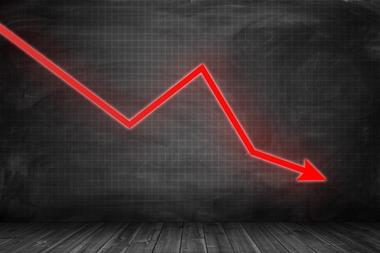As the coronavirus pandemic puts directors’ and officers’ premiums into overdrive, Insurance Times takes a look at potential claims risks and trends in this section of the market
Escalating premiums for directors’ and officers’ (D&O) insurance could see firms refuse to purchase or reduce this cover, leaving senior professionals personally on the hook for any arising claims.
Outlining this potential problem, James Wickes, partner at law firm RPC, explained: “After years of soft market conditions, insurers have increased D&O premiums to bring pricing up to a point that more accurately reflects the increased risk environment for D&Os.
”The challenge for the market will be reaching a price point that reflects the risk, but which is also affordable for businesses to pay.
“If companies are unable or unwilling to purchase policies to protect directors, then those directors - if willing to sit on the board still - could face potentially ruinous legal costs to defend themselves against, quite often meritless, claims.
“Companies may struggle to find directors who would be willing to assume personal liability for professional matters.”
Typically, D&O insurance covers directors’ defence costs for regulatory investigations or civil claims that have arisen due to their role.
D&O policies also cover the compensation a director is legally liable to pay, for example if they breach any of their duties.
Creeping costs
According to RPC, there are eight main drivers that are spurring the cost of D&O premiums upwards.
The most prominent one over the last year has undoubtedly been the Covid-19 pandemic, which has led to “real fears that directors will be sued if actions they have taken in response to the pandemic have led to the business making losses that might otherwise have been avoided.
Such claims could come, for example, from insolvency practitioners if the business ends up being insolvent”.
Wickes added: “Coronavirus has brought about exposures that directors and officers wouldn’t even have dreamt about a year ago, such as lawsuits brought by shareholders over how they have handled the pandemic.
“It will put even more strain on policies in what is already hard market conditions.”
Simon Konsta, partner at law firm Clyde and Co in London, agreed.
He stated that “insolvency claims will be a strong driver of D&O risk in 2021” and that “these will occur not just in the UK, but also Germany, Singapore, the US, Australia, Spain and UAE”.
“As the tide of Covid-related insolvency rises, the next 12 to 18 months will also see more claims against solicitors, accountants, auditors and property professionals,” he added.
Ben Gold, who leads RPC’s D&O defence team for SMEs based in Bristol, said he is “already seeing a marked increase in claims against directors of SMEs, particularly by insolvency practitioners and disgruntled shareholders, coinciding with the economic downturn caused by the coronavirus pandemic”.
In terms of combatting insolvency related D&O claims, Tim Grimes, trainee solicitor at law firm Weightmans, recommended that insurers ”review their exclusions carefully”.
He continued: ”We’re looking at a future with a surge in D&O claims. The adverse impact of Covid on businesses will expose many company directors to insolvency-related claims.
”This could materialise, for example, where directors have not made use of all of these government reliefs that were available to them and not acting in the best interests of the company and using all reasonable steps to avoid insolvency, which would fall foul of the Insolvency Act.
”If you look on the other side of that coin, claiming relief fraudulently, where directors have claimed relief where they shouldn’t have.
”Insurers will definitely need to review their exclusions carefully to make sure that insolvency claims that involve a level of fraudulence or wrongful trading can be properly excluded and perhaps look to include these terms [in exclusions] as these claims may start to be seen, or consider if new exclusions need to be included more generally.”
An example of claiming government relief incorrectly could be “furlough fraud” - Branko Bjelobaba, principal at general insurance FCA compliance consultancy Branko, said this is where businesses claim furlough support for employees they do not actually have.
Risk factors
Other drivers of D&O premium increases, according to RPC, include the rise in group litigation, the uptick in cyber attacks and hacking offences, as well as data breach exposures that have increased since the introduction of the General Data Protection Regulation (GDPR) in 2018.
The law firm added that D&O policies have also expanded its coverage, which bumps up premium prices.
“For example, rather than just cover advice during regulatory investigations, many policies now cover pre-investigation advice or advice related to Section 166 reviews (reviews not undertaken by the regulator),” it said.
D&O policies have additionally been extended to cover risks surrounding tax investigations following The Criminal Finances Act 2017, which holds directors accountable for corporate financial crimes.

Furthermore, regulation has had a knock-on effect on D&O premiums too. RPC explained: “The number of [Information Commissioner’s Office] investigations impacting directors has increased dramatically and over recent years insurers have paid very large sums to defend regulatory actions against directors of all kinds.”
There is also the Senior Managers and Certification Regime (SMCR) to consider.
The law firm continued: “The Senior Managers and Certification Regime was expanded in December 2019 and, following further expansion set for 31 March 2021, will encompass directors across all regulated financial services firms.
“The SMCR was introduced to hold individuals to account for their conduct and requires senior individuals to demonstrate they are ensuring compliance within their firms.
”This emphasis on individual accountability has increased the need for D&O insurance, but at the same time has caused D&O insurers to see more risk and therefore charge higher rates.”
Gold emphasised the importance of firms having D&O insurance for these occasions, explaining that “for the directors that are the subject of these claims, the D&O policy is often the lifeline that enables them properly to defend their position”.
Pointing the finger?
For Konsta, however, the increase in D&O premiums could simply be linked to wanting someone to blame when things go wrong.
He explained: “Companies and the professionals that advise them are definitely better run as a result of tougher regulator regimes.
”But while this may mean businesses are better prepared, they also face raised expectations – and a public clamour to find someone to blame, often a professional advisor, when those expectations are not met.
“Fuelling stakeholder expectations that ‘someone’ must be made to pay for corporate failure are the litigation funders who are increasingly ‘baked in’ to the claims lawyers’ business model and therefore much more likely to be a driver of liquidator and third-party claims against professionals in 2021.
“We cannot say with certainty that litigation funding will be a ‘game changer’, as many cases would have been anticipated anyway.
“However, we can expect that a higher volume of funded insolvency claims will have important practical and strategic implications for businesses, their advisors and ultimately their insurers.”
What is a wrongful trading claim?
According to Sarah Irwin, a solicitor at law firm Weightmans, “wrongful trading claims are set out in section 214 of the Insolvency Act.
It sets up that a liquidator or administrator may apply for a court order to compel a director or a former director to make a financial contribution to the company if they continue trading when, before the commencement of the winding up of the company, the director knew or ought to have concluded that there was no reasonable prospect that the company would avoid going into insolvency liquidation or insolvent administration”.
She continued: “It means that the former director can be personally liable for any failing to take every step which it ought to have taken to minimise the potential loss to the company’s creditors in continuing to trade.
“As we see more insolvencies, more investigations, we would expect these types of claims to increase.”

How are wrongful trading claims impacted by the pandemic?
Last March, as the Covid-19 pandemic first took hold and the initial national lockdown was introduced, Irwin said that the government introduced measures to suspend wrongful trading – these lasted until September 2020.
“These measures were intended to help directors make it through the Covid-19 pandemic, make it through that national lockdown, so that they could continue to operate and trade without fear of that personal liability,” she explained.
“The intention was that the suspension would reassure those directors who were maybe looking to trigger insolvency proceedings to avoid running that risk and the hope was instead they would try to get through to the other side and they’d make it through intact.”
However, with these special measures now at an end, Irwin predicts wrongful trading claims could emerge once more.
“There’s a potential there for an increase in D&O claims and in light of this, insurers will want to review their exclusions quite carefully to make sure that insolvency claims that involve fraudulent acts or intentional and deliberate acts are excluded,” she advised.
What can insurers do to combat D&O claims?
Irwin recommended: “If we’re looking at an increase in D&O claims, my top tip would be to get to grips as soon as possible with your policy wording upon receipt of a claims notification. We really would advise quite a detailed legal analysis because there may be some relevant exclusions within the policy terms.
“[Also] take a look at whether there are any other policies, perhaps a [professional indemnity] policy which could apply to the circumstances of the claim and which would have the potential of triggering a double insurance, or other insurance clause.”













































No comments yet